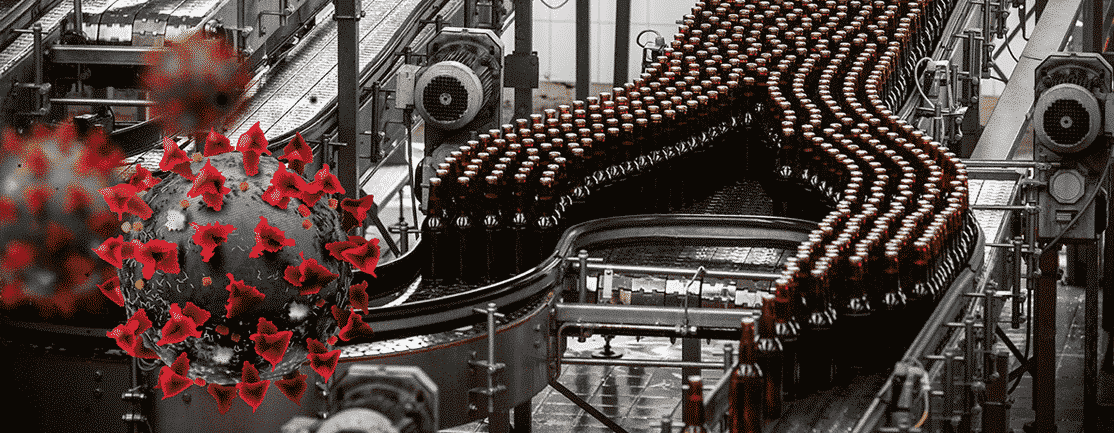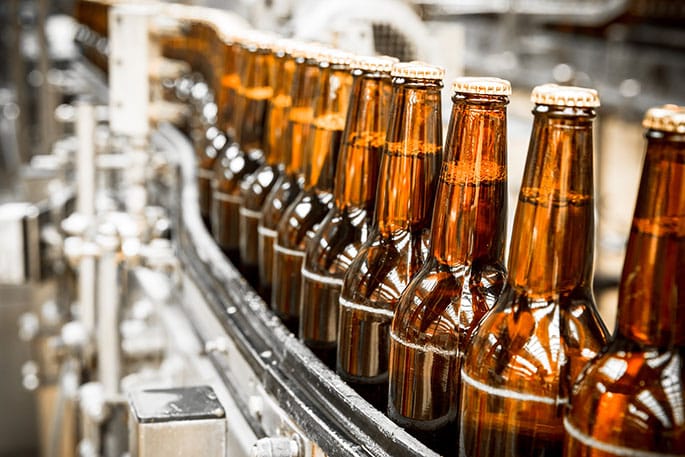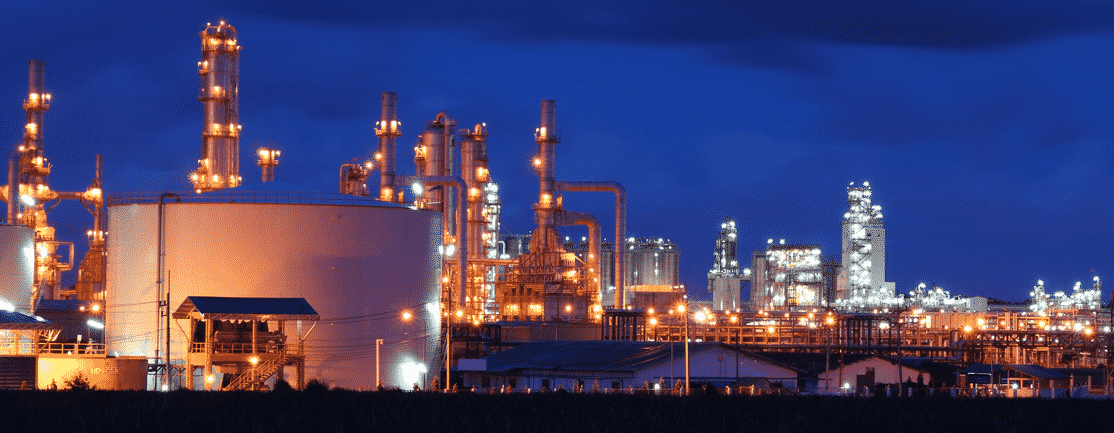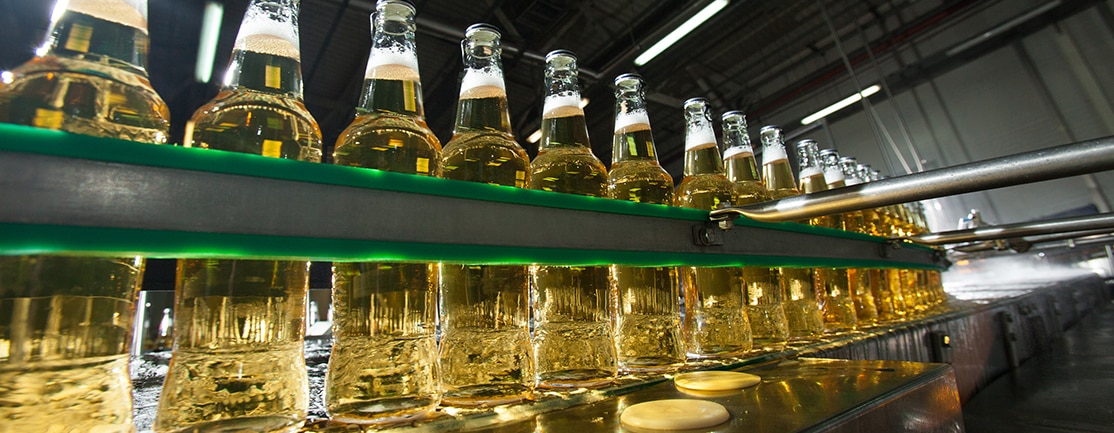
COVID-19 disruption: How the European alcohol industry can mitigate the effects
COVID-19 has inflicted a deep, rapid shock to economies, businesses and societies across the world. The alcoholic beverage industry in Europe has been heavily impacted, and beyond the shutdown period looms a recession. The duration and severity of the disruption will differ for specific producers dependent upon segment, portfolio and route-to-market orientation. But giant brewers and distillers are reconfiguring their value chains, and many smaller or boutique producers are bracing to survive.
In these unprecedented times, mitigating unpredictability and uncertainty requires a rigorous focus on efficiency and improvement. This article explores the wider context for Europe’s alcoholic beverage industry. It suggests strategies and methods which will forge resilience through this time of crisis and invest companies with heightened competitiveness and ROI capabilities in the future.
COVID-19 started as a black swan crisis, but the global outbreak will in all probability cause an extended state of drastically altered social and economic conditions. Europe’s alcoholic drink industry now faces an unprecedented challenge as the very nature of its consumption pattern – conviviality, shared social occasions – is impeded.
Even before the COVID-19 crisis, the European beverage industry faced flux and obstacles. Beer consumption in developed markets has been trending down for many years, driven by Europe’s aging population and lower alcohol consumption among younger age groups. Late- 2019 saw the US impose a 25% tariff on wines from France, Spain and Germany; and the nondrinking proportion of many European countries has been growing – in the UK, for instance, 20% of adults (10.6 million people) are now teetotal, rising to 27% in the 16-24 age group.
The scale of disruption has extrapolated
 Europe’s economy experienced a devastating first quarter of 2020 as GDP plunged 3.5% compared to Q4 2019. Recession looms across the eurozone, with the region experiencing its deepest and fastest fall in business activity and employment since the Second World War. The International Monetary Fund (IMF) projects the EU’s GDP to plummet 7% for the full 2020 year. The European Central Bank anticipates even worse, a 12% shrinkage.
Europe’s economy experienced a devastating first quarter of 2020 as GDP plunged 3.5% compared to Q4 2019. Recession looms across the eurozone, with the region experiencing its deepest and fastest fall in business activity and employment since the Second World War. The International Monetary Fund (IMF) projects the EU’s GDP to plummet 7% for the full 2020 year. The European Central Bank anticipates even worse, a 12% shrinkage.
Alcohol purchasing patterns may have changed for the foreseeable future
Initial stockpiling, as part of settling in for lockdown, caused an uplift: March data for the UK, for instance, reflects a 10.3% increase in overall liquor sales through supermarkets, and a 31.4% surge in liquor store volumes. But the impact of the closure of on-premise and hospitality venues will filter into Q2 data.
Inasmuch as COVID-19 has imposed drastically revised consumer behaviours, until health safeguards can be re-established, these are likely to be semi-permanent 180-degree changes rather than shifts. Although the alcohol industry and landscape itself is multi-faceted – and producers may experience the forthcoming months differently depending on their portfolio, target markets and pricing policies – brewers, bottlers, distillers, distributors and vintners must prepare for many months of near-total disruption.
New strategies are required to manage through the crisis and thrive beyond it
Lean management is designed to cope with crises precisely because it drives continuous improvement. Now is the time to apply its practices and principles.
Leaders will need to zoom in deeply and zoom out widely. This entails a combination of tight application of fundamentals – the hoshin kanri principle of dedication to key goals to drive efficiency and execute operational excellence – and the possible re-shaping of the company’s ecosystem within the alcoholic beverage industry of 2020.
Here are 10 strategic pillars to adopt immediately:
1. Business continuity will need stronger underpinnings. The current phase of turbulence may necessitate a crisis hub. But it should be as decentralised as possible; the principle is to direct rather than dictate, to guide but not command. The goal is to instil urgent but deep-rooted coordination and cooperation within the value chain through collaborative problem-solving.
Cost-cutting measures, such as those announced early in the crisis by Carlsberg and Heineken, and subsequently by almost every major industry competitor, will assist in the short term. Liquidity must be protected, requiring the reduction of non-essential spending and suspension of uncommitted capital expenditures. But balance outlook to the longer horizon. Use levers such as debt restructuring, balance sheet optimisation, and portfolio divestments. Evidence points to a greater likelihood of post-recession competitiveness and ROI for companies which resist overly rapid and deep cuts.1
Understand financial impacts throughout the value chain. How will tier-1 suppliers be effected? Can key customers survive the lockdown, and what shape will they take in the new normal? These and similar questions are important to plan the design of post-COVID operations and to collaborate, now, on measures which protect and enhance the business ecosystem.
2. Prioritise people. The entire workforce must be supported through communication which maintains motivation and reassures staff of the C-Suite’s concern for their wellbeing. COVID-19 has split producers’ employees between those who are required at the brewery, distillery, cellar, production facility or warehouse, and those who can work from home. Leaders should do gemba: get out to see the operations, and align the entire workforce. Make sure there aren’t two companies, one doing isolated and disengaged work from home, the other working at plants and bottling facilities under distant, even hostile conditions.
3. Re-assess operations. Production and logistics must be evaluated afresh with a critical eye. All facilities and processes must be reconfigured for the new dispensation of wide spacing, divorced shifts, partitioned zones, and ultimate hygiene and sanitation. Despite the difficulties, this is an opportunity to refine efficiencies using the essence of ongoing kaizen.
4. Harness technology capabilities. Companies that have previously implemented technologies to refine supply chain visibility, generate real-time data, and integrate IT-OT, will forge an easier path through the crisis. Now may not be the time to accelerate technology investments, but it is nevertheless opportune to configure a road map towards full-throttle leveraging of technology in a transformative digital supply network.
5. Maintain innovation. The alcoholic drinks category is a blur of choice with new flavour profiles, variants and packaging driving consumer experimentation or retention, and brand market share. The challenge now is to re-evaluate the existing pipeline. Suspend concepts for the post-COVID or post-recession period as appropriate, but those which match the times and address today’s human needs and desires should be fast-tracked or adapted accordingly. For example, Heineken can be expected to ramp up its direct-to-consumer (D2C) e-commerce craft beer portal, Beerwulf.com, but it should pend further innovation around their recent low- and zero-alcohol variant launches.
6. Continue marketing – but adapt messaging for consumers’ new reality. Nurturing brand values remains essential because brands are a beacon in times of volatility and will continue to be the primary assets of the major European liquor producers. But understand that people shift priorities during crises. Maintain relevance in consumer communications by encompassing a sense of community and empathy, and downplay lifestyle and socialisation cues.
Still, social media dynamism and creativity is key. Many spirits marketers now engage by offering online ‘quarantini’ recipes and virtual cocktail hours. Meanwhile, BrewDog stays connected with its consumers through virtual tastings and pub quizzes, as well as live-stream yoga classes promoted under its zero-alcohol variant, BrewDog AF.
7. Embrace e-commerce. The pandemic may have triggered an inflection point for online grocery shopping, which includes alcohol buying in many European countries. In England, for example, March retail sales declined 5.1% month-on-month, but e-commerce comprised a record 22.3% of spend, and alcohol purchases surged to over a fifth of total online sales.
However, D2C e-commerce is not a silver bullet for any drinks category. The makeup of spirits volumes, for example, averaged across European countries, is 70% through on-trade channels – with a higher value quotient. For alcohol overall, on-trade represents 55% of volumes – so the fundamental change in the nature of socialising will have a massive, perhaps semi-permanent impact.
Categories such as super-premium wines and spirits are well-suited to online purchasing, but the channel remains under-developed in many countries. It’s opportune for the industry to upweight its e-commerce systems and infrastructure.
8. Premiumisation and healthier drinking trends must continue to guide the business. Forging higher-price niches, or nurturing brands to gain price premiums, has been a core and accelerating industry strategy. But in uncertain times, consumers turn to reliable brands. And as disposable incomes fall, they seek improved value through larger- or multi-packs, discounted deals, or trading down in segment, such as from whisky to wine, and from craft to mainstream beer. But all producers need to consider the long game, and avoid quick-fix tactics which erode brand values and premiumisation opportunities.
Health trends will continue to gear moderation. All categories still need insights involving consumers’ motivations around drinking less but better, or migrating to low-alcohol variants. This is a long-term trend curve which will outlast the recessionary phase. It threads within producers’ marketing and innovation requirements, and will require ongoing initiatives to protect volumes and grow values.
9. Deepen the company’s societal involvement. Large and small, almost all Europe’s alcoholic beverage producers are contributing to the fight against COVID-19 and to mitigating its socio-economic damage. Diageo has pledged €2 million to support hospitality sector workers in Spain, Portugal and Britain. AB InBev and Heineken have donated tens of thousands of litres of surplus alcohol for repurposing into hand-sanitisers and disinfectants. The three employees of Belgium’s smallest micro distillery, Mont Saint-Jean, are now dedicated to making pure alcohol rather than whisky and gin.
The salutary lesson of what the world is currently undergoing is that business is interwoven with society. Leaders must align their companies and stakeholders to a form of progressive capitalism with a responsibility to communities.
10. Plan now for a post-COVID supply chain. Looking ahead, different countries’ economies will open up and recover at different times. Flexibility and agility will be crucial, both on the supply side and in demand planning. Brands with a strong presence in China, for instance, should anticipate imminent demand spikes as that country emerges from the eye of the crisis.
In Europe itself, it will be a long while yet before on-premise venues return to a semblance of pre-COVID normality. Given the off-trade channel’s less profitable mix, and as consumers downscale from craft or premium brands, and shift to multi-packs, producers must be poised to respond. This has marketing and logistics implications, such as the reset of production facilities to allow for rapid velocities of smaller batches, or new labels or formats.
Many producers will have a new understanding of their supply chain’s vulnerability in the face of a black swan shock. How they apply these learnings to the new consumer and industry landscape will determine their survival – and their comparative success post-COVID.
The European drinks industry must now face a raft of immense challenges with ingenuity and fortitude. An individual company’s specific segment or portfolio, and its regional – or global – customer and consumption profile, are key determinants in how it reconfigures and adapts. But the overarching requirement is for leaders of these companies to refocus, to embrace the 180-degree disruption, and to emphatically drive consistent, continuous improvement.

